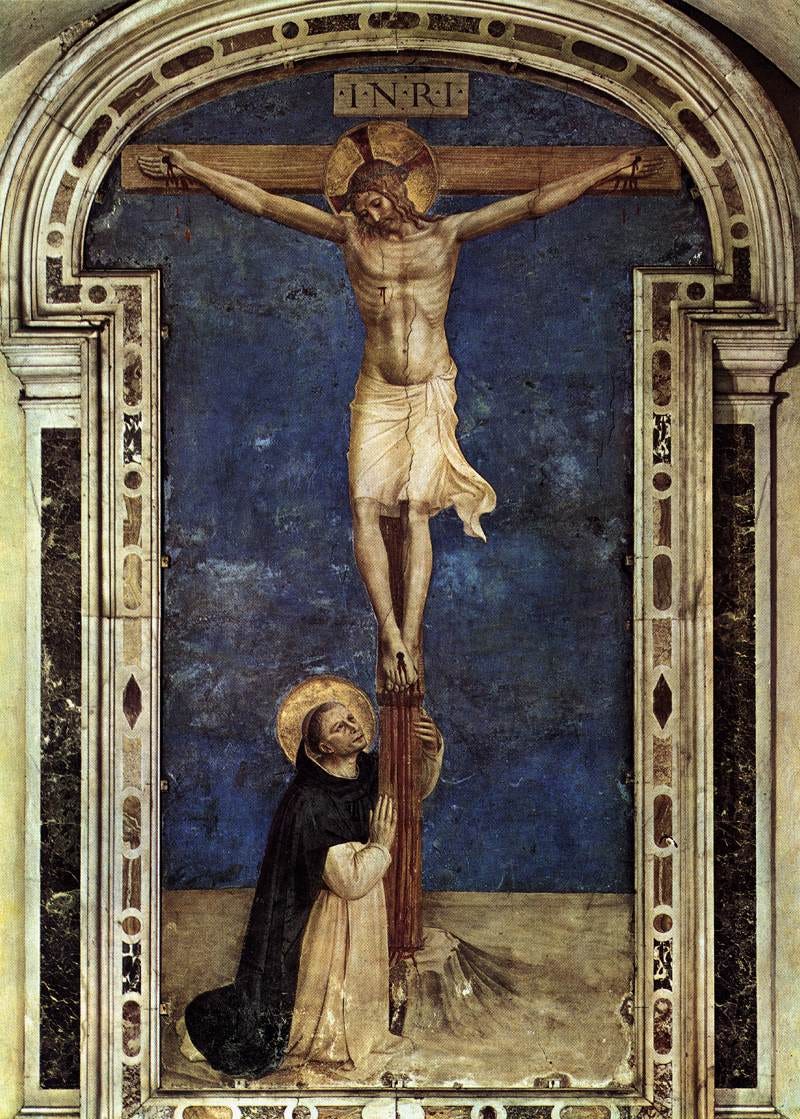The Victory of the Cross
A Reflection on the Feast of the Exaltation of the Cross
In today’s Office of Readings, Saint Andrew of Crete’s meditation on the Cross helps us to see the cross not as a mere instrument of suffering, but as the very key of salvation. He calls it both great and honorable: great, because it gathers into itself all of Christ’s mighty works and sufferings; honorable, because it shines as both the sign of God’s love in suffering and the trophy of His victory.
This twofold mystery of the Cross is central to our faith. The Catechism reminds us that Christ’s death on the Cross is “the unique sacrifice of Christ, the ‘one mediator between God and men’” (CCC 618). By freely embracing it, He transforms what was once a sign of shame into the instrument of our redemption. What was an executioner’s scaffold becomes the “tree of life,” reversing the tree of Eden where sin began (CCC 604, 613).
Christ's death is both the Paschal sacrifice that accomplishes the definitive redemption of men, through "the Lamb of God, who takes away the sin of the world", and the sacrifice of the New Covenant, which restores man to communion with God by reconciling him to God through the "blood of the covenant, which was poured out for many for the forgiveness of sins". CCC 604
By giving up his own Son for our sins, God manifests that his plan for us is one of benevolent love, prior to any merit on our part: "In this is love, not that we loved God but that he loved us and sent his Son to be the expiation for our sins." God "shows his love for us in that while we were yet sinners Christ died for us." CCC 613
The cross is the unique sacrifice of Christ, the "one mediator between God and men". But because in his incarnate divine person he has in some way united himself to every man, "the possibility of being made partners, in a way known to God, in the paschal mystery" is offered to all men. He calls his disciples to "take up [their] cross and follow [him]", for "Christ also suffered for [us], leaving [us] an example so that [we] should follow in his steps." In fact Jesus desires to associate with his redeeming sacrifice those who were to be its first beneficiaries. This is achieved supremely in the case of his mother, who was associated more intimately than any other person in the mystery of his redemptive suffering. CCC 618
St. Paul speaks of this paradox when he writes: “We preach Christ crucified, a stumbling block to Jews and folly to Gentiles, but to those who are called… Christ the power of God and the wisdom of God” (1 Cor 1:23–24). The Cross is foolishness to worldly eyes, yet to faith it is both the battlefield and the victory banner: through it, the devil is vanquished, the gates of death are torn open, and a new life begins for the whole world (cf. Heb 2:14–15).
Reginald Garrigou-Lagrange describes how the interior life itself matures by union with this mystery. It is by prayer, fidelity, and the cross that our faith becomes contemplative and fruitful; the cross is not only the means of Christ’s triumph, but also the normal path of sanctity for every disciple.
Today, we might use the method of prayer called Lectio Divina to reflect on the Cross and what it means regarding our faith and relationship to Jesus, the risen Savior:
Lectio (reading): Gaze upon the Cross and read anew St. Andrew’s words: it is both suffering and trophy, both defeat and victory.
Meditatio (meditation): Ask: where in my life do I see only the “suffering” of the Cross, without yet glimpsing its “trophy”? What victories might God be quietly working through what seems a loss?
Oratio (prayer): Speak to Christ crucified with gratitude. Thank Him that He chose the Cross for you and for the whole world.
Contemplatio (contemplation): Rest in silent adoration before the mystery of a love that conquers by surrender.
The Church invites us not to fear the Cross, but to embrace it as our sure hope: “If we have died with him, we shall also live with him; if we endure, we shall also reign with him” (2 Tim 2:11–12).
© 2025, Lawain McNeil, Mission Surrender, LLC.




loved this devo, thanks for sharing, Lawain…